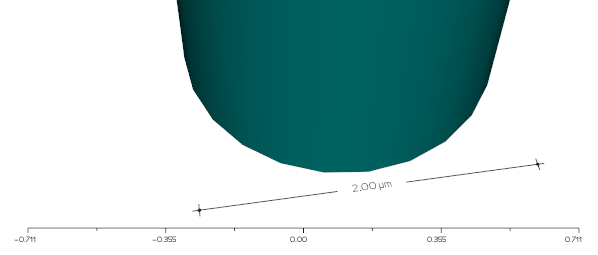Hi Federico, it makes sense! Except that one should keep in mind that such an indicator is meaningful only in parallel projection mode (not in perspective mode) . Indeed axes=13 should be disabled in perspective:
from vedo import *
c = Cylinder()
x0,x1,y0,y1,z0,z1 = c.bounds()
r = Ruler([x1+.1,y0,z0], [x1+.1,y1,z0], units='\mum')
show(c, r, axes=13) # 13=vtkLegendScaleActor
parallel:

I'll see if I can customize the https://vtk.org/doc/nightly/html/classvtkLegendScaleActor.html to make it similar to the itkwidget style.


Hi Marco,
itkwidgetshas a very nice scale bar functionality (see screenshot below, the number changes depending on how zoomed in you are), is there something similar in vedo? I know that there's an axis option that shows a ruler at the bottom of the screen, but I could never quite figure out if it would work as a scale bar. Also in general I'd prefer something small like in the the screenshot.I guess it would be possible to hack something like this using a 2d scale bar, but was wandering if you had already something set up for it.
To be clear: what I'd like is something that maps the length of a line in number of pixels in the window to what that corresponds to in the scene in terms of distance between two points. So I don't want a ruler that just shows the distance between two points. Say that the scalebar line is 100px long, if I'm very zoomed out that could be equal to a distance of 1000 between two points, but once I zoom in a lot the same line shows the distance betwee two points that are say 50 apart, makes sense?